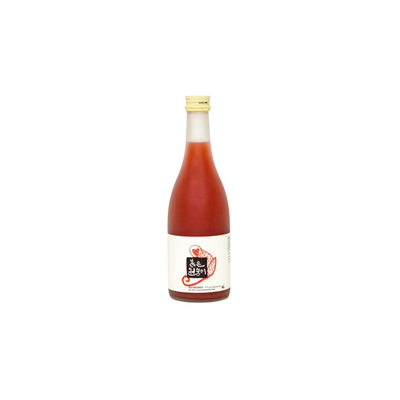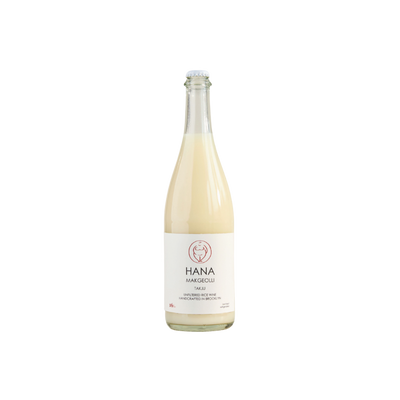Makgeolli
What is Makgeolli?
Makgeolli is a traditional Korean rice wine that falls into the Other Specialty category due to its unique production methods and cultural significance. This cloudy, slightly effervescent alcoholic beverage is made by fermenting rice with nuruk, a traditional Korean fermentation starter that contains wild yeasts and bacteria. What defines makgeolli is its milky appearance, low alcohol content (typically 6-8%), and its naturally occurring carbonation from the fermentation process, creating a refreshing drink with a tangy, slightly sweet flavor profile that's been enjoyed in Korea for over 2,000 years.
Learn More About Makgeolli
What makes Makgeolli unique?
Makgeolli stands apart from other rice wines and specialty spirits through its active fermentation process that continues even after bottling, creating a naturally effervescent, cloudy drink with a creamy texture and tangy flavor profile. Unlike sake, which undergoes multiple filtration steps for clarity, makgeolli retains its milky appearance from suspended rice particles and beneficial probiotics that give it a distinctive yogurt-like quality. This Korean traditional alcohol typically clocks in at a sessionable 6-9% ABV and offers a unique sweet-tart balance that's refreshingly different from the clean, refined character of most other Asian rice-based beverages.
How is Makgeolli made?
Makgeolli starts with cooked rice that's mixed with nuruk, a traditional Korean fermentation starter containing wild yeasts and bacteria. The mixture ferments for about a week, during which the starches convert to sugars and then to alcohol, creating a milky, slightly fizzy drink with around 6-8% ABV. The final product is typically strained but retains some rice sediment, giving it that characteristic cloudy appearance and creamy texture.
How do you drink Makgeolli?
Makgeolli is traditionally enjoyed neat and served chilled in small bowls or cups, giving it a communal, rustic feel that's perfect for sharing with friends. The milky rice wine's naturally effervescent and slightly sweet character makes it ideal for sipping slowly rather than shooting, and its low alcohol content (around 6-8%) means you can enjoy several servings without overwhelming your palate. While purists stick to the traditional serving method, modern bartenders have started incorporating makgeolli into cocktails, mixing it with soju for Korean-inspired highballs or combining it with fruit juices and herbs for refreshing summer drinks that highlight its creamy, tangy profile.
How do I choose a good Makgeolli?
Start by deciding between filtered and unfiltered versions—filtered makgeolli offers a cleaner, lighter taste that works beautifully in delicate cocktails, while unfiltered varieties bring that characteristic cloudy appearance and richer, more complex flavors that shine in spirit-forward drinks. For cocktail mixing, consider the sweetness level since some makgeolli can be quite sweet, which might throw off your recipe balance, so taste before you mix or ask your retailer about dryness levels. Fresh makgeolli from Korean markets will give you the most authentic experience with active fermentation creating subtle effervescence, but bottled versions from established producers like Kooksoondang or Jinro offer consistency that's perfect for home bartending.
Nutritional Information
Typical Calorie Range per Ounce: 12-18 calories
Typical Carbohydrate Range per Ounce: 2-4 grams
Typical Sugar Range per Ounce: 1-3 grams
Typically Gluten Free: No
Makgeolli is traditionally made from rice, but many commercial versions include wheat, barley, or other grains that contain gluten. Some artisanal producers make rice-only versions that may be gluten-free, but cross-contamination during production is always a concern. Always check the specific product label and contact the manufacturer directly to confirm gluten-free status if you have celiac disease or gluten sensitivity.
Scrolled this far? Your reward? Makgeolli Trivia!
- Makgeolli was once Korea's prison wine. During Japanese colonial rule, authorities banned rice wine production to conserve grain for the war effort. Korean prisoners secretly fermented makgeolli in their cells using smuggled rice and traditional nuruk starter, creating a clandestine brewing network that kept the tradition alive behind bars.
- NASA studied makgeolli for space missions. The fermented rice wine contains live probiotics and B vitamins that could help astronauts maintain gut health during long-duration space flights. The natural carbonation and shelf-stable fermentation process made it a candidate for space-friendly alcoholic beverages, though it never made it to the International Space Station.
- Makgeolli bottles explode like champagne grenades. The active fermentation continues after bottling, building pressure that can turn a forgotten bottle into a messy projectile. Korean convenience stores regularly deal with "makgeolli bombs" that blow their caps off, covering entire refrigerator sections in milky rice wine spray.
- Ancient Korean royalty used makgeolli as currency. During the Goryeo Dynasty (918-1392), high-quality makgeolli served as legal tender for paying taxes and settling debts. The alcohol content and quality determined exchange rates, with premium batches worth more than silver coins in rural markets.
- Makgeolli contains more protein than most beers and wines combined. A single cup packs about 2 grams of complete protein thanks to the rice sediment and active yeast cultures. Korean farmers traditionally drank it as a meal replacement during harvest season, calling it "liquid rice" for its nutritional density and energy-boosting properties.
Higher-proof spirits can be intense. Mix carefully, taste thoughtfully, and enjoy responsibly.
Gift message (optional)



